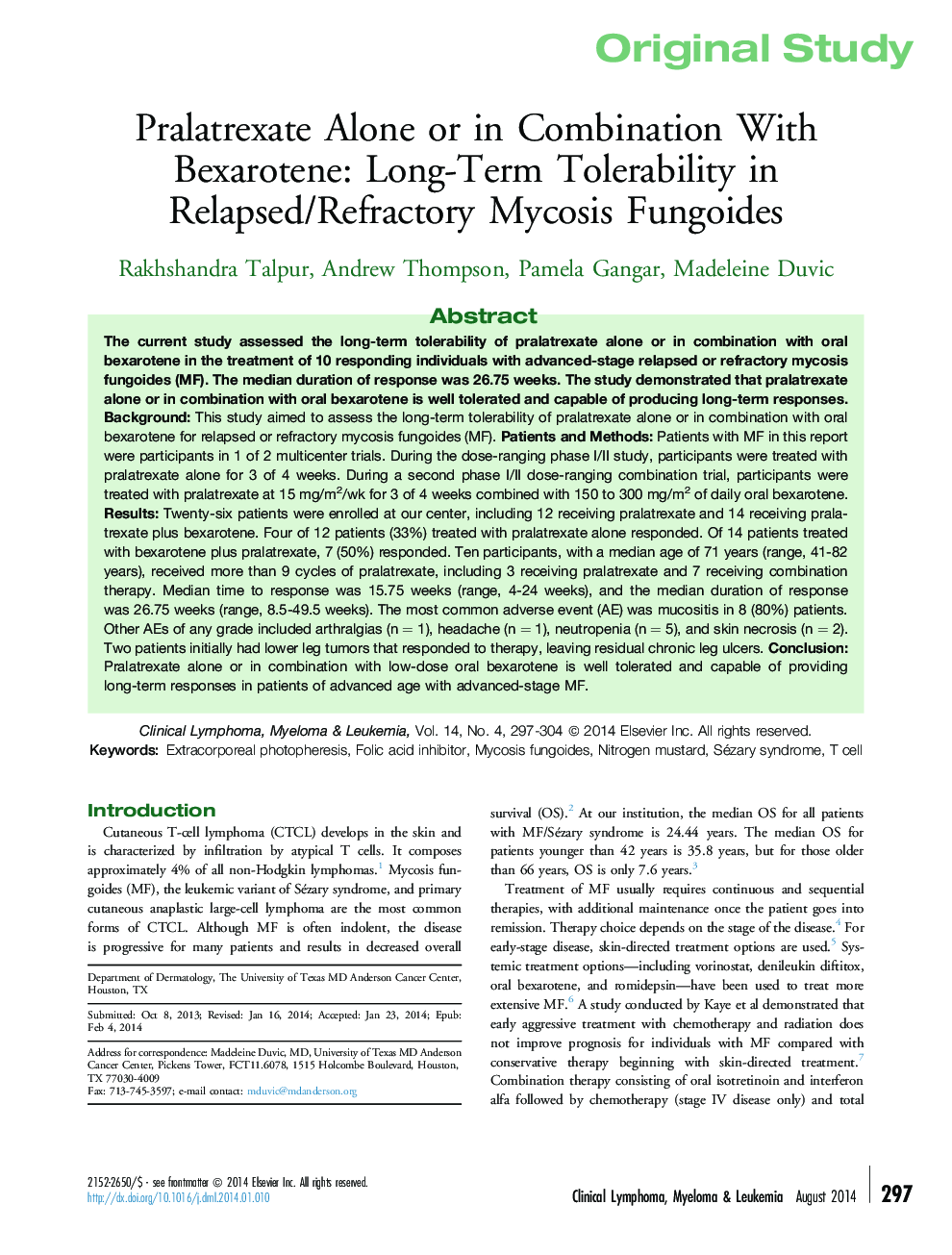| Article ID | Journal | Published Year | Pages | File Type |
|---|---|---|---|---|
| 5882885 | Clinical Lymphoma Myeloma and Leukemia | 2014 | 8 Pages |
BackgroundThis study aimed to assess the long-term tolerability of pralatrexate alone or in combination with oral bexarotene for relapsed or refractory mycosis fungoides (MF).Patients and MethodsPatients with MF in this report were participants in 1 of 2 multicenter trials. During the dose-ranging phase I/II study, participants were treated with pralatrexate alone for 3 of 4 weeks. During a second phase I/II dose-ranging combination trial, participants were treated with pralatrexate at 15 mg/m2/wk for 3 of 4 weeks combined with 150 to 300 mg/m2 of daily oral bexarotene.ResultsTwenty-six patients were enrolled at our center, including 12 receiving pralatrexate and 14 receiving pralatrexate plus bexarotene. Four of 12 patients (33%) treated with pralatrexate alone responded. Of 14 patients treated with bexarotene plus pralatrexate, 7 (50%) responded. Ten participants, with a median age of 71 years (range, 41-82 years), received more than 9 cycles of pralatrexate, including 3 receiving pralatrexate and 7 receiving combination therapy. Median time to response was 15.75 weeks (range, 4-24 weeks), and the median duration of response was 26.75 weeks (range, 8.5-49.5 weeks). The most common adverse event (AE) was mucositis in 8 (80%) patients. Other AEs of any grade included arthralgias (n = 1), headache (n = 1), neutropenia (n = 5), and skin necrosis (n = 2). Two patients initially had lower leg tumors that responded to therapy, leaving residual chronic leg ulcers.ConclusionPralatrexate alone or in combination with low-dose oral bexarotene is well tolerated and capable of providing long-term responses in patients of advanced age with advanced-stage MF.
